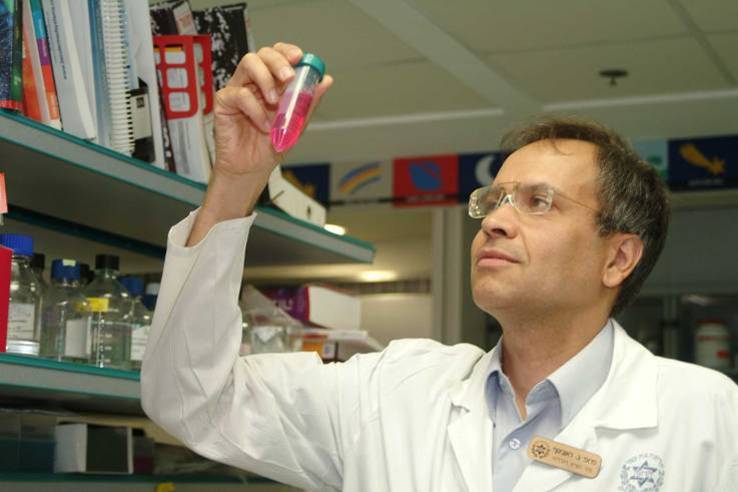
Hadassah Medical Center researchers have successfully employed human embryonic stem cells (hESCs) to halt deterioration of the retina, the specialized light-sensitive lining of the eye, in an animal model. This represents an important step toward the future use of hESCs to treat degenerative eye diseases, such as age-related macular degeneration, which cause millions of people worldwide to lose their sight.
The study involved transplanting pigment-containing visual cells derived from the hESCs. This retinal pigment epithelium (RPE) is a layer of pigmented cells sandwiched between the visual retinal cells, called photoreceptors, and the nourishing blood vessels at the back of the eye. The RPE provides essential support to the retinal photoreceptors and is critical for normal vision. Deterioration of the RPE plays a central role in the progression of diseases such as age-related macular degeneration and subtypes of retinitis pigmentosa. These conditions are associated with a progressive loss of vision that often leads to blindness.
“Although there are a variety of therapeutic approaches under development to delay the degenerative process, the grim reality is that many patients eventually lose their sight,” explains Prof. Benjamin Reubinoff, head of Hadassah’s Human Embryonic Stem Cell Research Center and a senior author of the study. “Cell therapy,” he notes, “which can replenish the degenerating RPE cells, may potentially halt disease progression.”
In the study, led by Dr. Eyal Banin, head of Hadassah’s Center for Retinal and Macular Degeneration, the Hadassah research team developed conditions to guide hESCs to differentiate into functional RPE-like cells in the laboratory. The researchers found that nicotinamide (vitamin B3, NIC) and Activin A, an important growth factor, promoted differentiation of hESCs towards an RPE fate. The hESC-derived RPE-like cells, which could be identified by their characteristic black pigment, exhibited multiple biological properties and genetic markers that define authentic RPE cells.
Working with Cell Cure Neurosciences Ltd., the researchers anticipate testing their animal model findings in clinical trials. Cell Cure Neurosciences Ltd. is a company of Hadasit Bio-Holdings, a subsidiary of Hadasit, Hadassah’s technology transfer arm. Prof. Reubinoff is the chief scientist of Cell Cure. Cell Cure is currently raising the funds to advance the research towards clinical trials, with the expectation that experimental transplantation of RPE cells into human patients can begin in two to three years.
The research was partially funded by grants from the Israel Science Foundation, the Israel Ministry of Health, and the Yedidut Research Fund.
